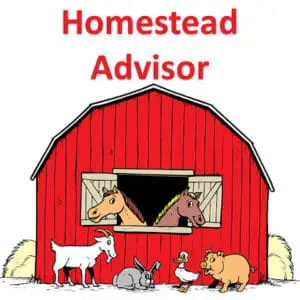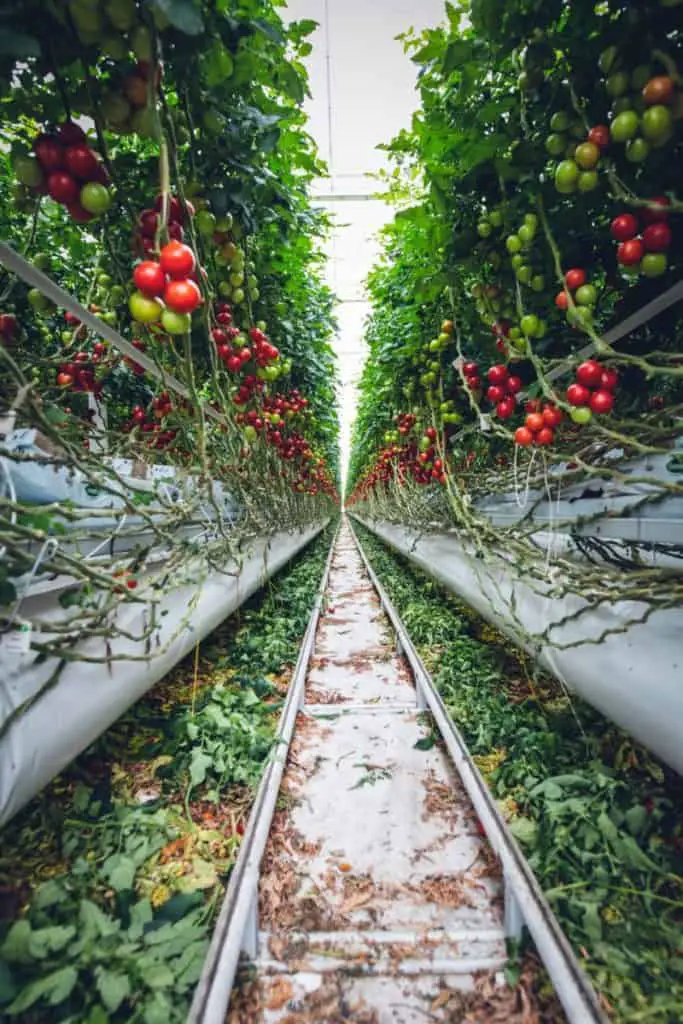
Vertical Gardening has gained in popularity in recent years leaving some to believe it is relatively new. But it’s actually thousands of years old. There is evidence of vertical gardens as far back as 3000 BC. It worked then and it can work for you now.
Vertical Gardening allows a gardener to produce vegetables utilizing a smaller footprint. Its methods are many, and range from simple trellises to elaborate free-standing structures. Some are built with recycled materials but many commercial systems are available.
If you look at any large city where real estate square footage is at a premium, you’ll find construction has been trending vertically for decades. Developers have learned that square footage above ground is just as valuable as it is at ground level. The same is true in the gardening world.
| Vegetable | Growth Pattern | Examples |
| Bean, Pole | Vining | Rattlesnake Scarlet Runner Blue Lake |
| Bean, Bush | Bush | Contender Tendercrop Top Crop |
| Cucumber | Bush | Bush Champion Pickle Bush Spacemaster |
| Cucumber | Vining | Burpless Liberty Hybrid Slice Nice |
| Melon | Sprawling & Vining | Watermelon Cantaloupe Honey Dew |
| Pea | Vining | Sugar Snap Alderman Super Sugar |
| Southern Pea | Bush | Blackeye Purple Hull Cream & Crowder |
| Squash | Bush | Yellow Crook Neck Yellow Straight Neck Zucchini |
| Winter Squash | Sprawling/Vining (can be trained vertical) | Acorn Hubbard Butternut |
| Determinate Tomato | Bush (need cage) | Sophie’s Choice Tumbling Tom Amelia |
| Indeterminate Tomato | Vining (need cage) | Brandywine Red Cherry Celebrity |
| Grape | Vining (need support) | All Varieties |
| Muscadine | Vining (need support) | All Varieties |
| Blackberry | From Trailing to Erect Varies By Variety | Growth Habit Terminology: Trailing Semi-Erect Erect |
Vertical Gardening’s Popularity
As I said, people realized a long time ago they could grow more food in a small space by allowing vegetation to climb, or by arranging growing containers to be hung or stacked vertically. Populations increased and more people began living in urban areas. But many still had a desire (oftentimes a desperate need) to grow their own food.
Since “necessity is the mother of invention”, the urban population, who were skilled at raising food in the countryside, found innovative ways to grow food in their cities, utilizing a much smaller footprint. Vertical Gardening was born, and people have been doing it that way ever since.
When Vertical Gardening Is Practical
There are many reasons gardeners choose vertical gardening. Often it’s not from necessity but for aesthetics. Vertical Gardens can be very attractive. But, many have space requirements that force them to encourage their plants to grow up. By allowing your plants to climb, you can grow a lot of vegetables without using up a lot of space on the ground.

Vertical gardening also brings with it an easier level of maintenance. It is easier to prune plants at “eye-level” than it is to bend over to do any necessary pruning. Plant inspection for pests is also simplified when that pest is eye to eye with you. And when pests are found, treating them is much easier in a vertical garden.
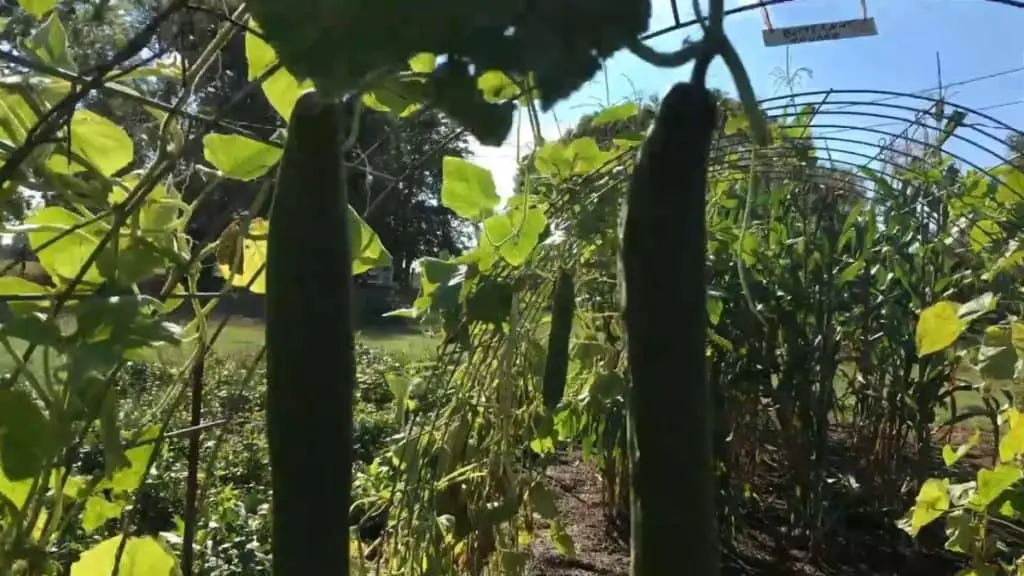
Most pests found in the garden are actually soil-borne pests. Even if they are capable of flight, they were probably born in the soil. When a plant is allowed to sprawl on the ground, as many plants will do, the pest population can get at the fruit (and the vegetation) a lot easier.
Growing vertically also allows greater airflow around the plants. Many plant diseases are dramatically decreased by having the plant off the ground, and increasing the airflow around it. So, it should be easier for the gardener to battle disease, when those plants are up off the ground.
I’ll admit, the older I get the less I enjoy bending over. When it comes time to maintain my plants, it’s nice to have them at a level that doesn’t require bending or kneeling. Also, when it’s harvest time, it’s much easier to gather the produce when it is above the ground, than it is when it is close to the ground or even on the ground.
As our population ages, there are many more people with difficulties that might prevent them from gardening in the traditional sense. Gardening vertically can alleviate many of those problems. So, anyone who has mobility issues should benefit from vertical gardening, and it might be the best method for someone who has given up on gardening.
Also, since there are so many people packed in small urban areas, vertical gardening is especially attractive to apartment dwellers or to those with small backyards. You truly can grow a lot of vegetables in a very small space.
There is a family in California that grows thousands of pounds of vegetables on 1/10 of an acre. Much of the produce they grow is vertical. It has to be because there is no place to go but up. They are an inspiration to anyone who desires to be a gardener but is limited on space.
Methods Of Vertical Gardening
There seem to be two methods of gardening vertically. One is allowing or training plants to climb a trellis, a fence, a wire, or some other type of grid. There are many “Vining” plants that do best in a vertical garden and we will discuss them later.
Plants that have vining characteristics spend their day reaching for the sun. Most have tentacles that will grasp whatever they can find in the space above them, looking for a “hand-hold”. When they find something they can grab onto, they pull themselves up and begin the process again. Some vining vegetables can climb a dozen feet or more.
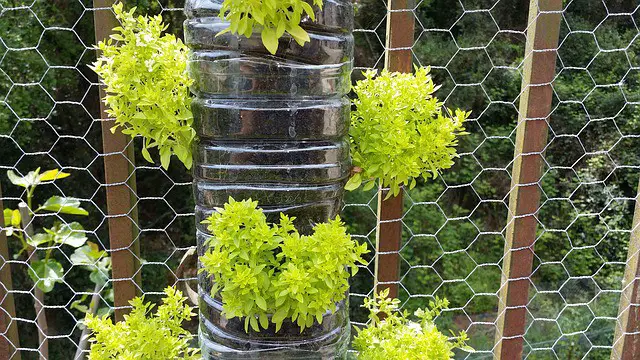
The other method is to grow vegetables that are actually planted in boxes or other receptacles that are placed vertically on a wall. These plants might not have any vining characteristics at all, they are just being planted on a vertical surface such as a wall or fence.
This technique is a great way to maximize space. Everyone is familiar with a “window box”, and that is a small vertical garden. However, consider having dozens of “window boxes” along a wall filled with small tight-growing vegetables. Everything that is grown would be at or around eye level and yet would be taking up no floor space at all. What a great way to utilize a wall.
Crops That Will Thrive Vertically
Some vegetable plants climb and other vegetables “sprawl”. A good example of a climbing vegetable would be pole beans. Pole beans are meant to do just exactly what their name implies, they climb poles (or any other vertical structure you have for them to climb).
A good example of a sprawling type vegetable would be melons. Watermelons and cantaloupes like to sprawl out along the ground. They can run 15 to 20 feet or longer before they finally terminate their growth. A sprawling vegetable does not really desire to climb, but they can be trained to do so, allowing you to grow them and smaller spaces. But, you will have to train them to climb.
What I mean by that is… Their nature is to run along the ground, so you will have to pick up the vine place it on the trellis or fence and give them a little “assistance”. They will climb after they are trained to go up, but that is not their natural inclination.
If you choose to train a sprawling vegetable that has a large fruit such as a cantaloupe or watermelon, you will have to make sure you support that fruit when it becomes large. The vines will not be strong enough to hold a 5-pound cantaloupe or a 20-pound watermelon without a little help.
For that reason, you will probably want to build a “sling” of some sort, something similar to a hammock to support the weight of the melon. I’ve seen these slings made out of old pantyhose and other types of cloth, fashioned into an means of support.
Again, climbing is not their preferred method of growth, so you will have to make sure to keep an eye on them. You might have to continue the training process vertically from time to time. And you might have to adjust the sling as the melon grows larger.
Also, winter squash is a vegetable that have a tendency to sprawl but can be trained to climb with a little effort. Some winter squash varieties can get large enough that its fruit would need support, but many of them, such as a Hubbard Butternut squash, will hang from a vine without any support.
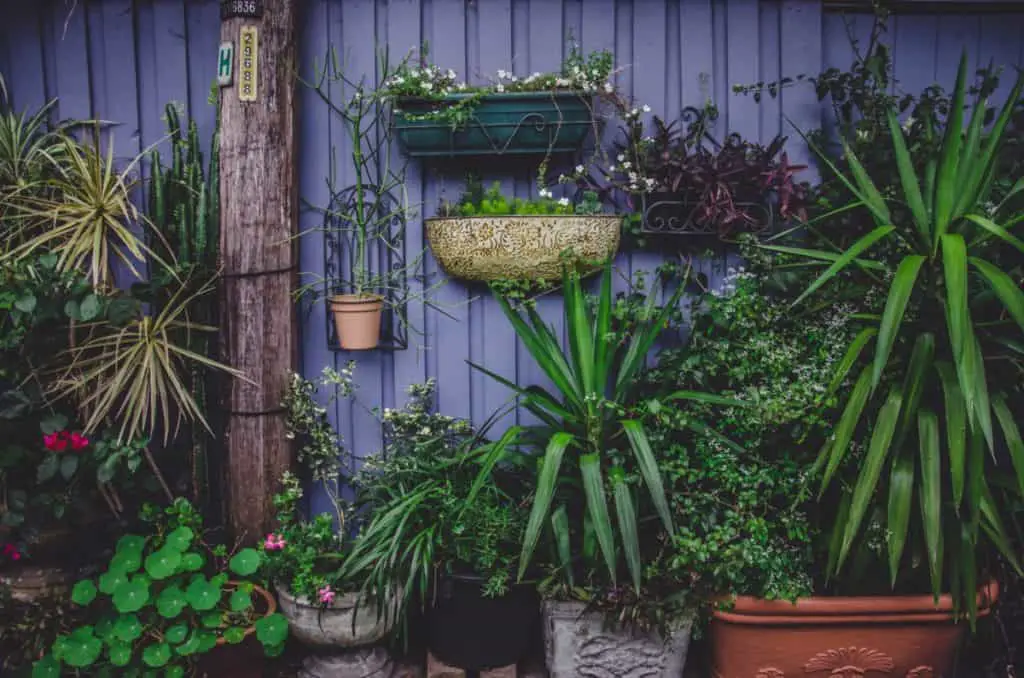
Other vining crops include certain varieties of cucumbers. When you buy cucumber seed make sure you look to see if it is a “Bush” type or a “Vining” type” cucumber. A bush cucumber grows short and compact like a hedge. Bush cucumbers will not grow vertically. There are many types of bush cucumbers, both slicing and pickling varieties
Other cucumbers, vining-type cucumbers will need to be trellised, grown on a fence, or other structure. Vining cucumbers (my favorite is burpless) can grow to be 6 or 8 ft tall, and even taller. They love to climb and if you give them a place to go they will go UP with a vengeance.
Peas are a vining crop that do well on a trellis or some other support. However, “Southern Peas” are usually a bush-type crop. Southern Pea varieties include Blackeye, Purple Hull, Cream and Crowders. They usually do not need vertical support.
This year I raised some Zipper Cream Peas that I planted next to my corn. Those peas crawled right up the corn stalks they were planted next to. So, some Southern Pea varieties will climb vertically if they are allowed to.
Many beans are of the bush variety, but as I said before some are labeled as “Pole”. This means they are climbers. One of the neatest varieties of bean to grow are “yard-long beans”. For the last several years I have grown an Asian variety of the yard-long bean.
They derive their name from the fact that they get so long. Some are right at a yard long. It’s fun to watch them grow and climb the trellis I have them on. Picking the long beans is a pretty neat experience. They do exceptionally well when grown vertically.
Gourds can be grown vertically. They are also climbers and need a support system that will allow them to do what they are designed to do. Most gourds will be light enough to hang from a vertical structure without any support.
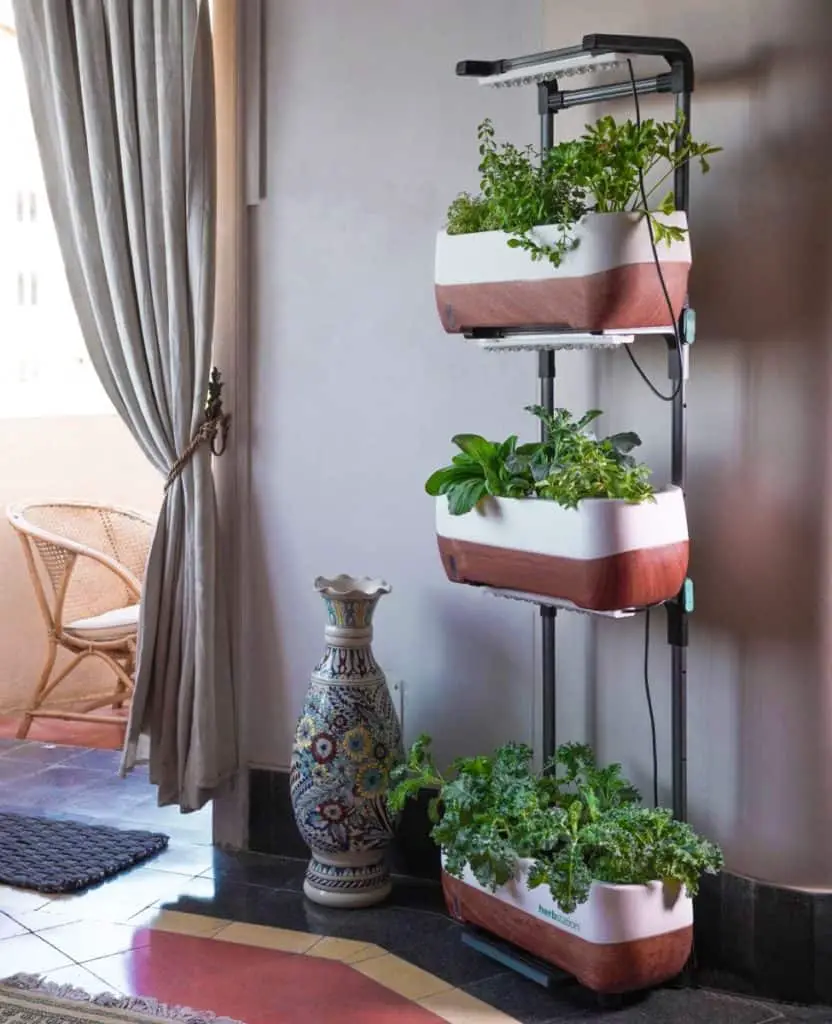
Tomatoes are designated as a vining crop, however, some “determinate” tomatoes will not get very tall and therefore don’t need a tall structure for climbing, but even most determinate tomatoes will need some sort of support.
Indeterminate tomatoes are a true vining vegetable. They will get very tall if they are allowed to. Some growers that grow thousands of tomato plants, (especially in hothouses), train them onto large wires that allow the tomato vine to grow very long.
I always grow my tomatoes in tomato cages that I have made myself. If they were not contained within the cage they would sprawl on the ground since the weight of their vines and the fruit would not allow them to stand upright. So tomatoes are another great vegetable to grow vertically.
Malabar Spinach is a climbing form of a spinach-like plant. It’s not really in the “spinach family” but when cooked it tastes like spinach. It also is a very nutritious plant to eat. Malabar Spinach will grow very, very long and will absolutely need a means of support to climb on.
Malabar spinach is pretty tasty, and a vigorous grower. But beware, they put out a lot of seeds that will fall at the end of the season and come up all throughout your garden in years to come. Because of that, they can be pretty invasive.
One crop that is well known for growing vertically is grapes. I’m sure you have seen row upon row of grapes growing in a vineyard. Grapes do form a large “trunk” that might hold them up to some extent, but not well enough when they are loaded down with clusters of ripe grapes.
So, they install elaborate wire systems for the grapes to grab on to. And I do mean grab. Grapes, like many other vining crops, form ‘tendrils” on their vines. Those tendrils are surprisingly strong. When they grab onto something and wrap themselves around it, it’s pretty difficult to pull them off. They are really strong.
Popular Vertical Methods
Let’s differentiate here between something that is planted vertically and something that naturally grows vertically. By planting vertically I mean planters that would be affixed to a wall. These would probably not be plants that actually grow vertically, or climb. They would simply be planted on a vertical structure instead of planted on the ground and allowed to climb a vertical structure.
Examples of this would be window boxes and other soil receptacles that would be mounted on a wall, with plants in them. These could form a wall of smaller vegetables like salad greens.
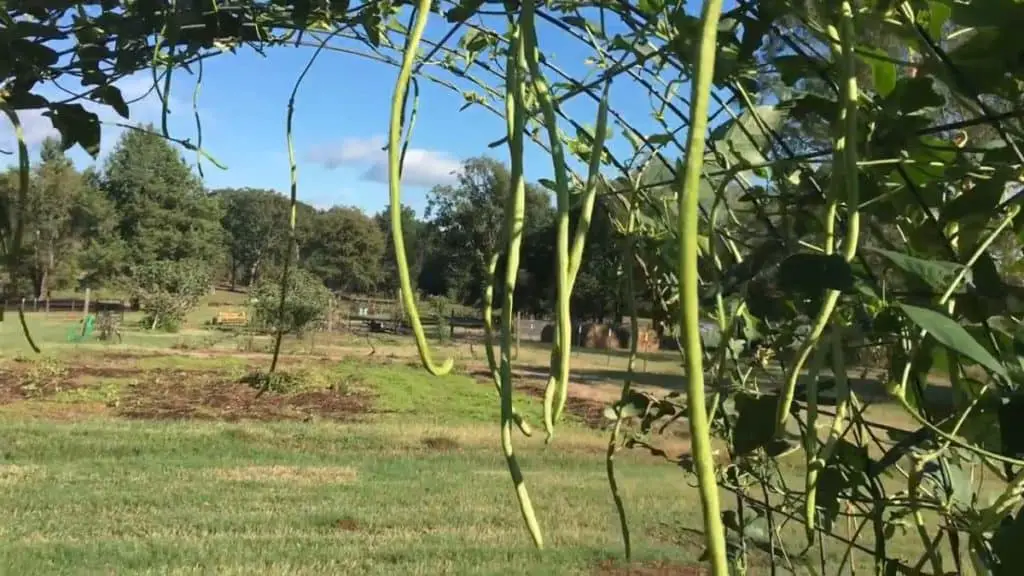
Plants that grow vertically would include anything that can be planted in the ground, or in containers on the ground, but will reach up to climb a structure nearby. You can even use containers to plant in with vertical structures to allow the plants to climb them. Here is a great article on Container Gardening.
Vertical Growing Structures
As I mentioned before, structures can be as simple as a stick in the ground that allows a nearby plant to wind around it as it climbs upward. But, they can be elaborate also.
Vertical growing structures could include three poles in the ground forming a “tee-pee” type shape. Pole beans and cucumbers would love to have something like that to climb.
I like using T-Posts and Cattle Panels to build a temporary fence. My cucumbers grow up it readily, but some need a little “training” as described earlier. But once they are started on a fence or pole, they learn quickly and you probably won’t need to give them anymore “instruction”. Cattle Panels are a little cumbersome, but they work well for vertical gardens.
Plants can be used to form room dividers too. If vining crops were planted at the base, they would grow up and fill in the spaces of the trellis or fence forming a solid wall of green. This could be done indoors or outdoors, but if indoors make sure you pick plant varieties that do well indoors and don’t need sunshine.
Recycle Old Pallets
There are many ways to use recycled old pallets for vertical gardens. The spaces between the boards can be filled with soil and have plants placed in them. Then the pallets can be leaned against a wall, or hung on a wall or fence to form a vertical garden space.
There are salad towers, A-Frames, Fences, Upside Down Tomato planters, and so many other ways to grow vertically. All have their place in Vertical Gardening, and all are very effective in using a small space to grow a lot of vegetables.
If you are more of a do-it-yourselfer and want to build your own vertical garden structures, I found a guy that has a collection of over 16,000 Woodworking Plans. It consists of everything from outdoor structures like arbors and outbuildings, to cabinets desks and other furniture for both indoors and out. Take a look at this collection of plans here. It’s one of the most amazing packets of material I’ve seen in a long time.
The Grow Arch
My favorite way to grow vertically is by using something I call a “grow arch”. These are structures resembling an upside-down “U” made from Cattle Panels (I love cattle panels). I plant all sorts of things along the base of the Grow Arch and watch it climb. They are also very attractive when they are filled out with vegetation, and resemble an arch similar to what you would see at a wedding.
Here’s a video I did showing some of the Grow Arches in my Garden
Problems With Vertical Gardening
So far I’ve listed the Pros of vertical gardening because I really love it. There are some Cons also. It can get expensive if you buy ready-made vertical towers and other fixtures that are designed for vertical gardening. Many of those items are pretty expensive. But, they can be really attractive.
You’ll have to weigh the cost versus the ease of setup. It may be worth the expense of buying something ready-made if you don’t have to go through the process of building it yourself.
Another Con – If you are planting vertically on boxes attached to a wall, the boxes will dry out very quickly. You’ll have to make sure you water them often when the weather gets hot and dry. Another option would be to install a drip system with a small water line running to each box. If you set it on a timer, there would be very little maintenance to keep the garden in great shape. This Article on Drip Irrigation Basics will be helpful for you.
Vertical Ornamentals
So far we have talked about vegetables but many ornamentals can also be used in vertical gardens. If they are climbing plants, give them something to climb. If they are trailing plants, plant them higher on a wall or structure and have them trail down. This can really be a beautiful way to grow flowers.
Vertical Succulents
Succulents are very popular right now. Imagine rows of succulents mounted in planters on a wall. That could really be a nice way to display your succulent collection (and your green thumb) to your friends.
Hopefully, this has helped you decide to Go Vertical. There is so much about gardening to enjoy, and growing vertically just takes that to another level… Literally!
My YouTube Channel has over 800 videos where I show vertical gardening, traditional gardening, and container gardening techniques. You can find it HERE.
